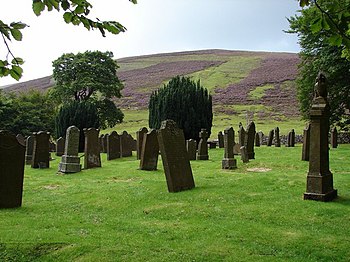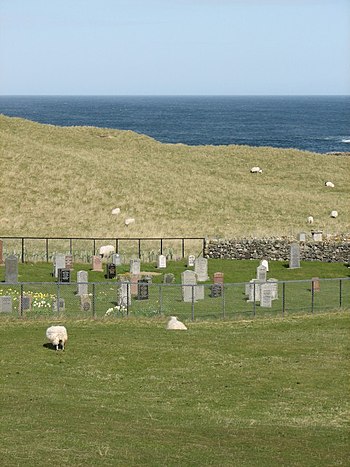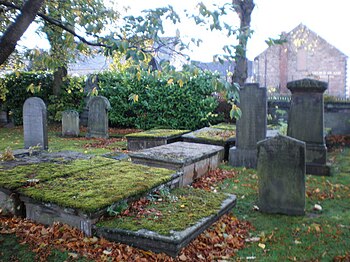 |
| English: Victorian graves A fine selection of ornate Victorian graves and monuments in Church Cemetery (Photo credit: Wikipedia) |
 |
| English: Wanlockhead Burial Ground The burial ground has gravestones from 1790s to 1880s include stones of miners killed in accidents; the are also 3 war graves. (Photo credit: Wikipedia) |
 |
| English: Burial ground. Mixture of old and new graves. (Photo credit: Wikipedia) |
 |
| English: Forgotten spot in a church graveyard This is a large grave yard in the centre of Inverness. Graves which were readable dated from 1800 - 1890, there were older graves which were impossible to read. The ones in photo were unreadable. (Photo credit: Wikipedia) |
Sooner rather than later, humans began to see
graveyards as a source of income. The Normans
The height of graveyard excess probably came
during the Victorian era. Victorians were obsessed with romantic gothic grave
markers; with intricate and elaborate designs. Victorian graves were many times
made of stark white marble. Cherubs and rose covered crosses marked many respectable
Victorian graves. Poetry told something of the person’s life. In the centuries past,
skulls adorned graves reminding people of the great equalizer that death was.
Now the positive message of life after death within a Christian framework
marked the graves of the saints.
It was popular in the late Victorian age to
take photographs of the dearly departed in their graves. Isomer displayed
pictures on the grave stones. Almost every Victorian of means had some death photography
taken, especially if the departed was a child. Children graves were especially
inclined to be marked with romantic notions. The Victorians were very
sentimental about their loved ones that had passed. Keepsakes such as locks of hair
were keeping by Victorians long after the burial of a family member. Visiting
graves and even picnicking in the graveyard, were activities that the
Victorians did not view as morbid
Most communities of any size out grew church
graveyards by the late 19th century. Graveyards for profit sprang up
everywhere. While a certain community might as for free plots for paupers and
criminals within the confines of these semi public burial grounds, these places
catered to consumers. Families still purchased plots together, and many marked
future burial spots with giant statues or mausoleums. Special sections for veterans
or religious minor\ties made sure that every one could find an appropriate
burial place within the confines of the gates of the community grave yard.
Still there were those who because of race or religion still have to provide
separate resting places for their dead.
In later Victorian days marble graves were
replace by softer granite that weathered faster than marble. Older graves
attracted moss and lichen making graveyards appear appropriately dreary.
Gravestones were not particularly well cared for. Cemeteries today tend graves
much more carefully. This is true as long as the cemetery is still used by the community.
In rural area older graveyard are abandoned and the grave stones left to
deteriorate. Only those of historical value are restored...
The growing popularity of genealogy research
on the internet has led to many finding where their ancestors from the 19th
century were buried. Grave hunters make grave stone rubbings with chalk.
charcoal, or oil crayons. They place paper over the gravestone and rub the
indentations to get a likeness of the writing and art on the headstone. this
further damages weathered and worn sandstone and soft granite graves.
Rubbing gravestones people are able to better read the engraving on a
head stone. I* you can better to consult the grounds keeper of the cemetery and
investigate the records of the stone This helps preserve a faded
inscription, Grave rubbing can cause father damage to the head stone.
Information about ancestor’s graves can many
times be found online. Many community groups have extensive projects to
document the inhabitants of the older grave yards in their community. The make
projects out of returning fallen grave stones to their original resting place
and cutting underbrush. Volunteers enter information from burial records from
old church graveyard to various genealogy sites. Many sites will also post
pictures of graves. You may not have to go any father than your computer to
view the graves of your Victorian ancestors.




ezyridho01
ReplyDelete